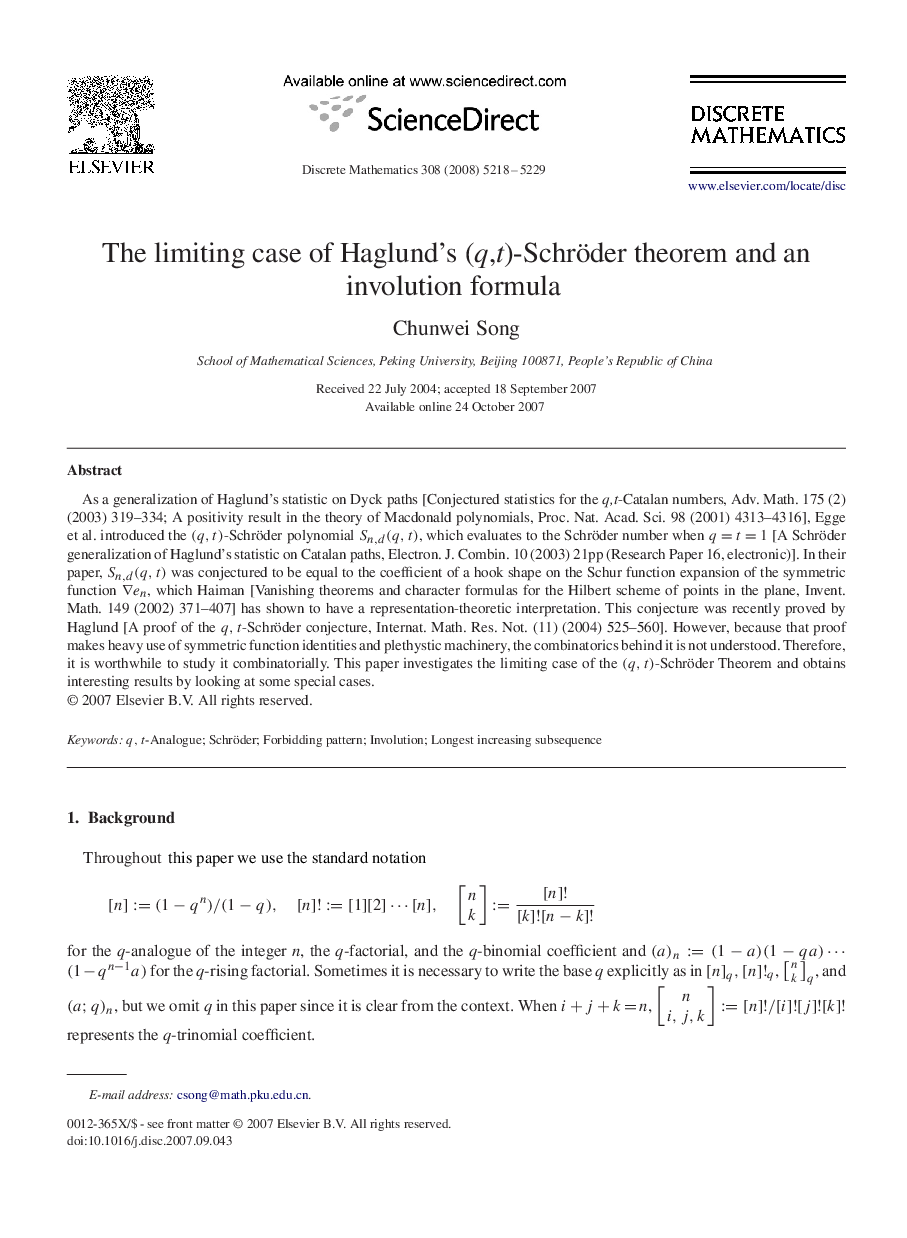| Article ID | Journal | Published Year | Pages | File Type |
|---|---|---|---|---|
| 4650462 | Discrete Mathematics | 2008 | 12 Pages |
As a generalization of Haglund's statistic on Dyck paths [Conjectured statistics for the q,t -Catalan numbers, Adv. Math. 175 (2) (2003) 319–334; A positivity result in the theory of Macdonald polynomials, Proc. Nat. Acad. Sci. 98 (2001) 4313–4316], Egge et al. introduced the (q,t)(q,t)-Schröder polynomial Sn,d(q,t)Sn,d(q,t), which evaluates to the Schröder number when q=t=1q=t=1 [A Schröder generalization of Haglund's statistic on Catalan paths, Electron. J. Combin. 10 (2003) 21pp (Research Paper 16, electronic)]. In their paper, Sn,d(q,t)Sn,d(q,t) was conjectured to be equal to the coefficient of a hook shape on the Schur function expansion of the symmetric function ∇en∇en, which Haiman [Vanishing theorems and character formulas for the Hilbert scheme of points in the plane, Invent. Math. 149 (2002) 371–407] has shown to have a representation-theoretic interpretation. This conjecture was recently proved by Haglund [A proof of the q,tq,t-Schröder conjecture, Internat. Math. Res. Not. (11) (2004) 525–560]. However, because that proof makes heavy use of symmetric function identities and plethystic machinery, the combinatorics behind it is not understood. Therefore, it is worthwhile to study it combinatorially. This paper investigates the limiting case of the (q,t)(q,t)-Schröder Theorem and obtains interesting results by looking at some special cases.
